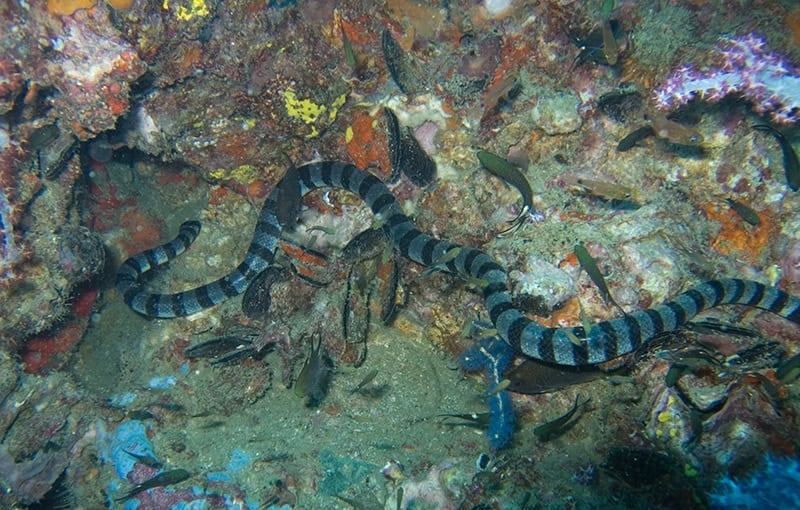Sea snakes have evolved remarkable adaptations that allow them to thrive in marine environments while still needing to breathe air. Unlike fish, these reptiles lack gills and must surface to breathe, yet some species can remain submerged for hours or even days. This fascinating respiratory capability makes sea snakes unique among marine creatures and presents an intriguing study in evolutionary adaptation. From specialized lungs to modified skin that can absorb oxygen, sea snakes employ several sophisticated mechanisms to survive in their oceanic habitat.
These air-breathing reptiles have developed specialized physiological and anatomical features that enable them to maintain an amphibious lifestyle despite their full-time residence in ocean waters. Understanding how sea snakes breathe underwater offers insights not only into these remarkable creatures but also into the evolutionary processes that allow vertebrates to adapt to challenging environments. This article explores the fascinating respiratory adaptations that enable sea snakes to thrive in their marine domain.
The Evolutionary History of Sea Snakes
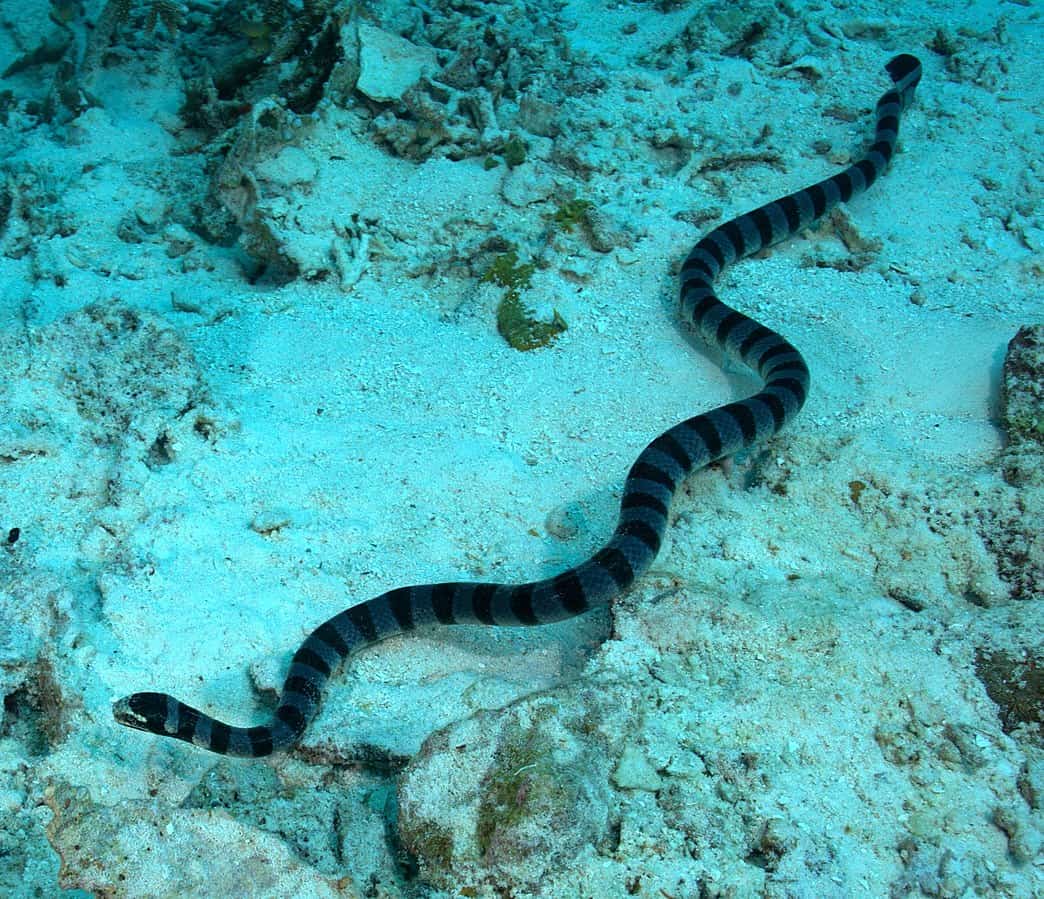
Sea snakes belong to the Elapidae family, which includes cobras and coral snakes, and evolved from land-dwelling ancestors approximately 10-15 million years ago. This relatively recent evolutionary transition to marine life means that sea snakes retain many characteristics of their terrestrial relatives, including the need to breathe air. Unlike marine mammals such as whales and dolphins, which evolved over a much longer period, sea snakes represent a more recent adaptation to aquatic life.
Scientists recognize about 70 species of sea snakes, divided into two main groups: true sea snakes (Hydrophiinae) that spend their entire lives in water and sea kraits (Laticaudinae) that come ashore to lay eggs. This evolutionary history explains why sea snakes have had to develop specialized breathing adaptations rather than evolving gills like fish. Their respiratory system reflects this evolutionary compromise, combining features that allow them to breathe air efficiently while spending most or all of their time in water.
Specialized Lung Anatomy
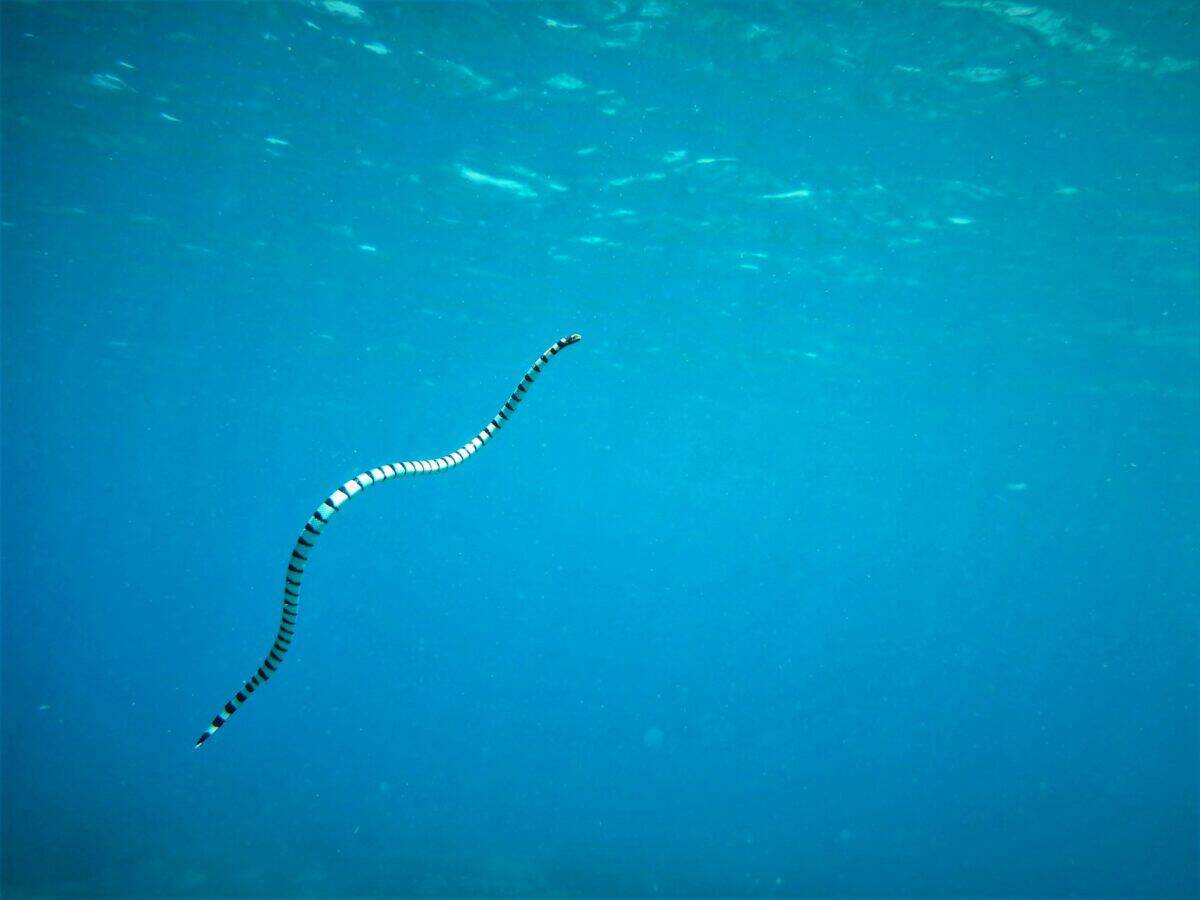
Sea snakes possess a highly specialized lung structure that sets them apart from their land-dwelling relatives. Most notably, they have a single functional lung that extends almost the entire length of their body, while the second lung is either greatly reduced or absent altogether. This elongated lung serves as both a respiratory organ and a buoyancy control mechanism, allowing sea snakes to adjust their depth in the water column without expending excessive energy.
The lung of a sea snake contains specialized chambers that maximize oxygen extraction efficiency. The posterior portion of the lung contains less respiratory tissue and functions primarily as an air reservoir and buoyancy control organ. This adaptation enables sea snakes to extract more oxygen with each breath, reducing the frequency with which they must surface. Additionally, the lung tissue is highly vascularized, containing an extensive network of blood vessels that facilitate rapid oxygen absorption and carbon dioxide elimination during their brief surfacing events.
Cutaneous Respiration: Breathing Through Skin

One of the most remarkable adaptations in sea snakes is their ability to perform cutaneous respiration—literally breathing through their skin. Studies have shown that some species of sea snakes can absorb up to 33% of their oxygen requirements directly through their skin while submerged. This adaptation is particularly important during prolonged dives when lung-based respiration alone would be insufficient to sustain the animal’s metabolic needs.
The skin of sea snakes has evolved to be thinner and more permeable to gases than that of land snakes, allowing for more efficient diffusion of oxygen from the surrounding water. This cutaneous respiration is supported by a dense network of capillaries just beneath the skin surface. The efficiency of this system varies among species, with some pelagic sea snakes having developed this ability to a greater extent than others. This supplementary oxygen source explains how some species can remain submerged for hours without returning to the surface to breathe.
Dive Reflex and Metabolic Adjustments

Sea snakes possess a sophisticated dive reflex that triggers several physiological changes when they submerge. When a sea snake dives, its heart rate slows dramatically—a phenomenon known as bradycardia—reducing oxygen consumption throughout the body. Simultaneously, blood flow is redirected primarily to vital organs such as the brain and heart, while flow to less essential tissues is reduced. This selective perfusion helps conserve oxygen for the tissues that need it most.
Additionally, sea snakes can significantly lower their metabolic rate while diving, sometimes by up to 80% of their surface metabolism. This dramatic reduction in energy expenditure greatly extends the time they can remain submerged on a single breath. These metabolic adjustments, combined with their specialized respiratory adaptations, allow some species to remain submerged for several hours before needing to surface for air. The olive sea snake (Aipysurus laevis), for instance, typically dives for 30 minutes to two hours but can stay submerged for up to five hours when necessary.
Enhanced Oxygen Storage Capacity

Sea snakes have evolved enhanced oxygen storage mechanisms that further extend their underwater endurance. Their blood contains a higher concentration of hemoglobin—the oxygen-carrying protein in red blood cells—than is found in land snakes. This adaptation allows sea snakes to bind and transport more oxygen molecules per volume of blood, creating an effective oxygen reservoir that can be drawn upon during extended dives.
Beyond blood-based oxygen storage, sea snakes also store oxygen in their muscles through a protein called myoglobin. This muscle-based oxygen reserve provides an additional source that can be tapped when blood oxygen levels begin to decline during prolonged submersion. The combination of increased hemoglobin concentration and enhanced myoglobin stores enables sea snakes to maintain aerobic metabolism for longer periods underwater, reducing their reliance on anaerobic pathways that produce lactic acid and require longer recovery periods at the surface.
Surface Breathing Behavior and Adaptations
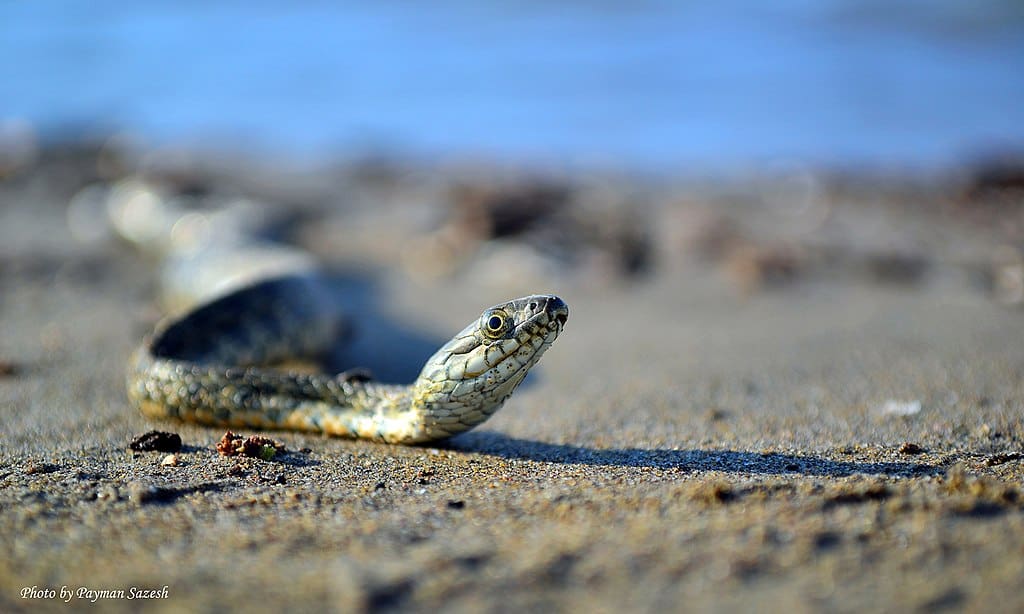
When sea snakes do surface to breathe, they have developed specialized behaviors that maximize efficiency while minimizing exposure to predators. Many species only expose the tip of their snout to the air, keeping the rest of their body submerged. This minimal exposure reduces vulnerability while allowing them to exchange gases through their nostrils. The nostrils of sea snakes feature valve-like structures that can be tightly closed underwater, preventing water from entering the respiratory system.
Some species have also developed the ability to perform tidal breathing, where they can partially exhale and inhale without fully emptying their lungs. This breathing strategy allows for more efficient gas exchange while preserving some air in the lungs for buoyancy control. Sea kraits, which divide their time between land and sea, often come ashore not only to lay eggs but also to rest and breathe more efficiently, as breathing at the water’s surface requires more energy due to wave action and the need to maintain position against currents.
Salt Gland Function and Osmoregulation
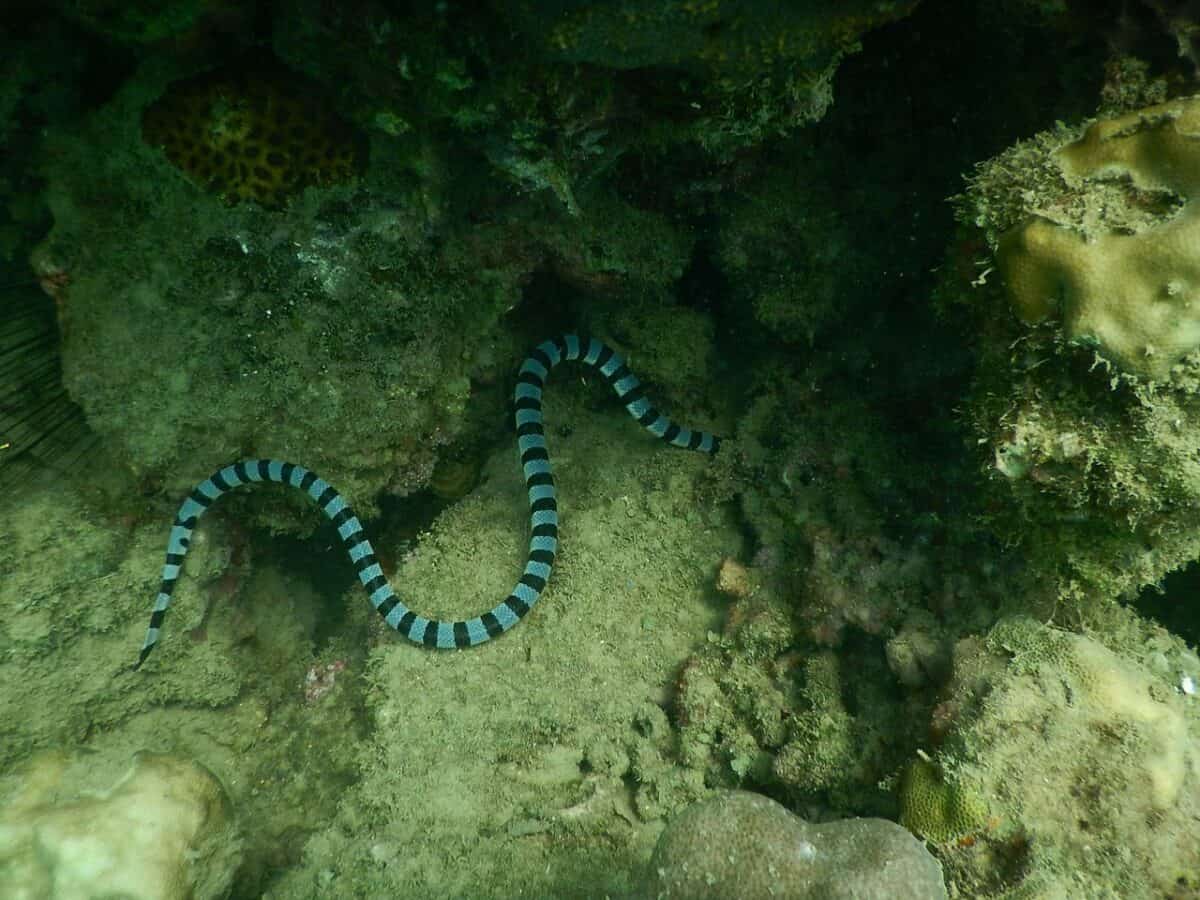
While not directly related to breathing, sea snakes’ salt glands play a crucial role in their overall physiological balance that affects respiratory efficiency. Unlike marine mammals that have kidneys adapted to handle excess salt, sea snakes possess specialized sublingual salt glands located beneath their tongue. These glands extract excess salt from the bloodstream and excrete it through ducts in the mouth, allowing sea snakes to drink seawater when fresh water is unavailable.
Proper osmoregulation is essential for respiratory function because it maintains appropriate blood chemistry and fluid balance. If a sea snake were unable to eliminate excess salt, it would experience cellular dehydration that could impair oxygen transport and cellular respiration. The efficient functioning of these salt glands therefore indirectly supports the snake’s respiratory capabilities by maintaining optimal physiological conditions for gas exchange and oxygen transport throughout the body.
Species-Specific Respiratory Differences
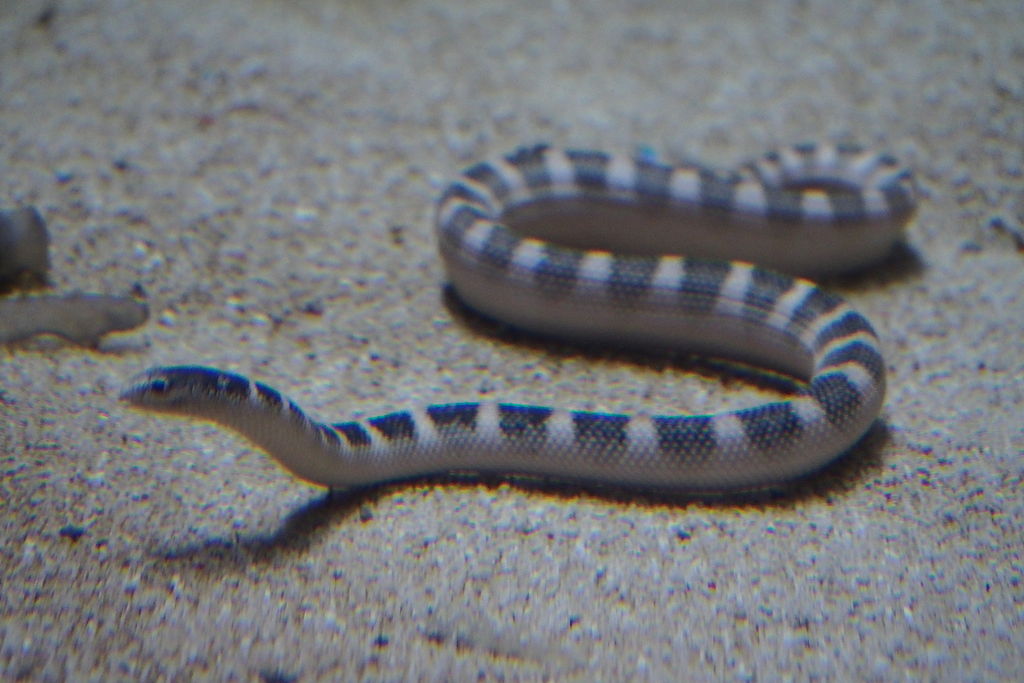
Not all sea snakes have identical respiratory adaptations. Species that frequent deeper waters or remain submerged for longer periods typically show more pronounced specializations. For example, the beaked sea snake (Hydrophis schistosus) has one of the most toxic venoms of any snake but also possesses remarkable diving capabilities, with especially efficient cutaneous respiration that allows for extended hunting dives. In contrast, species like the yellow-bellied sea snake (Hydrophis platurus), which spends most of its time floating at the ocean’s surface, has somewhat less developed cutaneous respiration.
Sea kraits (Laticauda species) represent an interesting intermediate adaptation, as they regularly return to land. Their respiratory system reflects this amphibious lifestyle, with adaptations that work efficiently both in water and on land. Their lung structure is less specialized than fully aquatic sea snakes, and they rely less on cutaneous respiration. These differences highlight how respiratory adaptations have evolved to match each species’ specific ecological niche and behavior patterns, demonstrating the remarkable evolutionary fine-tuning that has occurred within this group of marine reptiles.
Respiratory Challenges in Different Environments
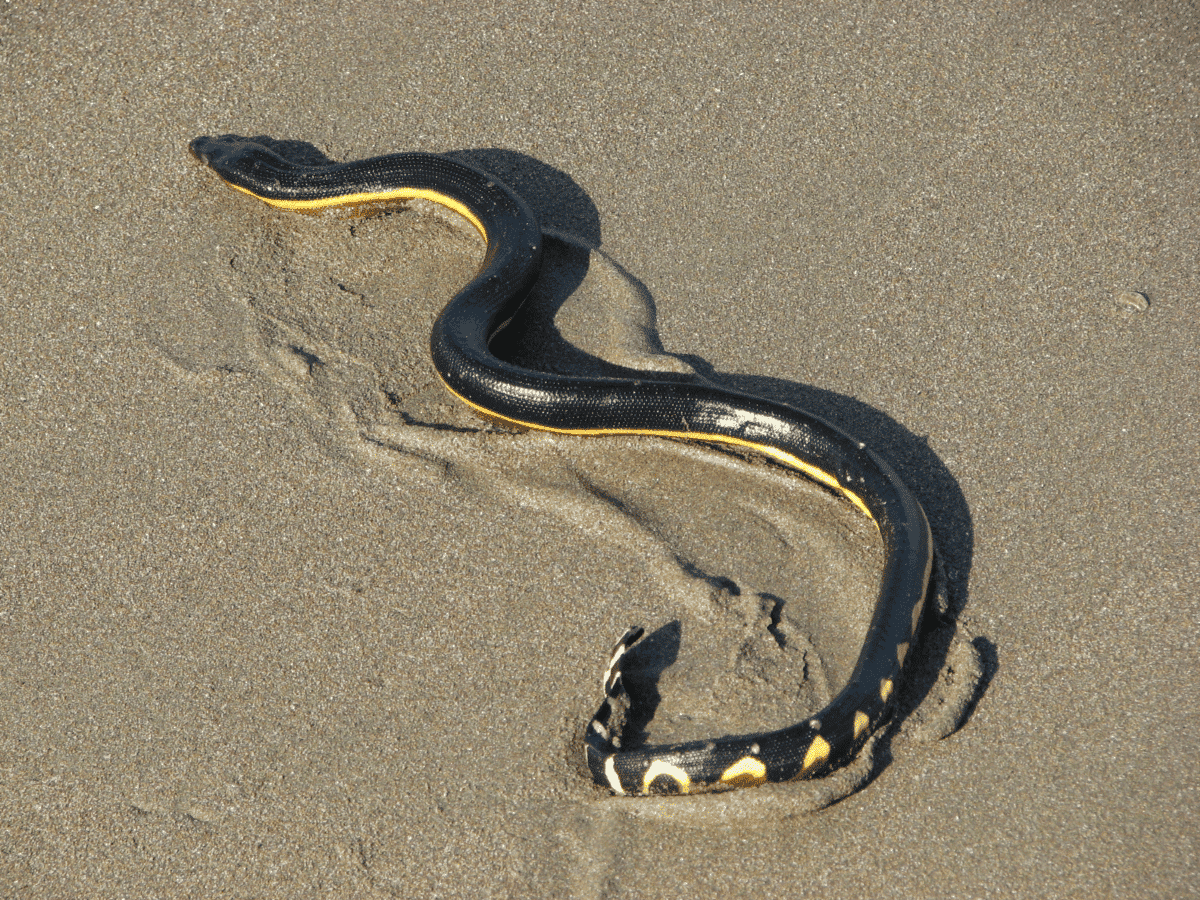
Sea snakes face different respiratory challenges depending on their habitat. Species living in coral reefs must navigate complex three-dimensional environments while maintaining access to the surface for breathing. These snakes often utilize air pockets trapped in coral formations during high tide as emergency breathing stations. In contrast, pelagic species like the yellow-bellied sea snake must contend with open ocean conditions, where finding refuge is impossible and they remain more exposed to predators when surfacing to breathe.
Environmental factors such as water temperature and oxygen content also affect sea snake respiration. In warmer waters, oxygen solubility decreases while the snake’s metabolic rate increases, creating greater respiratory demands. During severe weather events or in areas with pollution-induced hypoxia (low oxygen), sea snakes must surface more frequently, potentially increasing their exposure to predators. Some species respond to these challenges by relocating to more favorable areas, while others alter their diving and surfacing patterns to compensate for the changing environmental conditions.
The Impact of Climate Change on Sea Snake Respiration

Climate change poses significant challenges to sea snake respiratory function. Rising ocean temperatures increase metabolic rates in these ectothermic animals, requiring more frequent breathing and shorter dive times. Additionally, ocean acidification—caused by increased carbon dioxide absorption—can affect blood chemistry in sea snakes, potentially altering their ability to transport oxygen efficiently. These changes could force sea snakes to expend more energy on respiration, reducing energy available for other vital activities like feeding and reproduction.
Warming oceans also affect the distribution and severity of hypoxic zones—areas with dangerously low oxygen levels. As these zones expand due to climate change, sea snakes may find their habitable range increasingly restricted. Species with more specialized respiratory adaptations might have limited ability to adjust to these rapidly changing conditions. Research suggests that some sea snake populations are already declining in certain regions, with altered respiratory demands possibly contributing to these declines alongside other factors like habitat degradation and prey availability changes.
Research Techniques and Scientific Discoveries

Studying sea snake respiration presents unique challenges due to their marine habitat and venomous nature. Researchers employ various techniques including time-depth recorders attached to snakes to monitor diving patterns, blood sampling to analyze oxygen-carrying capacity, and controlled laboratory studies of captive specimens. Modern imaging techniques like CT scans have revealed previously unknown details about lung structure and vasculature. Additionally, isotope analysis helps scientists understand metabolic rates and oxygen consumption during different activities.
Recent scientific discoveries continue to expand our understanding of sea snake respiration. Researchers recently discovered that some species can detect oxygen levels in water through specialized receptors, allowing them to avoid hypoxic areas. Another fascinating finding reveals that certain sea snakes can extend their oxygen-absorbing capability by increasing blood flow to skin areas during prolonged dives. Ongoing research also investigates potential applications of sea snake respiratory adaptations in human medicine, particularly regarding oxygen delivery in compromised respiratory conditions and extended breath-holding capabilities.
Conclusion: Evolutionary Marvels of Adaptation

Sea snakes represent one of nature’s most remarkable examples of respiratory adaptation, having evolved multiple sophisticated mechanisms to overcome the fundamental challenge of being air-breathing animals in an aquatic environment. From their specialized single lung to cutaneous respiration, from enhanced oxygen storage to precise metabolic control, sea snakes demonstrate the incredible plasticity of vertebrate physiology in response to environmental pressures. These adaptations allow them to occupy ecological niches unavailable to most other reptiles.
Understanding how sea snakes breathe offers valuable insights not only into the biology of these fascinating creatures but also into broader principles of evolutionary adaptation and physiological function. As climate change continues to alter marine environments, the fate of sea snakes may depend on the flexibility and limits of these respiratory adaptations. Continued research into these remarkable animals promises to yield further discoveries about respiratory physiology that may inspire biomimetic applications and inform conservation strategies for these unique marine reptiles.
- How Sea Snakes Breathe While Living in the Ocean - August 14, 2025
- Some Animals Can Live for Centuries, But This One Might Be Immortal - August 14, 2025
- Why Giraffes Rarely Make Noise—and When They Do - August 14, 2025

